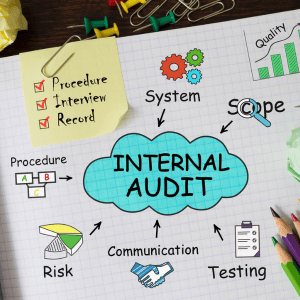Introduction:

1. Inventory Your Hardware and Software
The first step in a technology audit is to take stock of the tools you're currently using. Create a list of all the hardware (computers, servers, mobile devices) and software (applications, cloud platforms, and subscriptions) in use. Include:
- Purchase dates and warranties
- Usage statistics (how often it's used and by whom)
- Costs associated with maintaining the technology
This helps you understand the scope of your current tools and how well they’re serving your business needs.
2. Evaluate Security and Compliance
Cybersecurity is critical for small businesses, especially those handling sensitive data. Assess the strength of your current security measures by asking the following:
- Are firewalls, antivirus software, and encryption in place?
- Are passwords secure and regularly updated?
- Are you compliant with industry regulations like GDPR, HIPAA, CCPA, or PCI DSS?
Evaluate your backup solutions as well. Ensure your data is backed up regularly and stored securely.
3. Assess Efficiency and Performance
Is your technology actually working for you? Here’s where you look at the impact of your tools on business operations. Questions to ask include:
- Is any hardware outdated or slowing down productivity?
- Are your software solutions fully utilized, or are you paying for features you don’t need?
- Are employees frequently encountering tech issues that slow down their work?
Gather input from your team about what tools help or hinder their performance to gain a well-rounded perspective.
4. Review Vendor Relationships
If you rely on external vendors for IT support, software, or hardware maintenance, now is the time to assess those relationships. Consider:
- Are you getting the best value for your money?
- Are response times quick enough when issues arise?
- Could another vendor offer better service, support, or pricing?
Sometimes renegotiating contracts or exploring new vendor partnerships can lead to significant savings and improved service.

5. Analyze Scalability
5. Analyze Scalability
As your business grows, so do your technology needs. It’s important to ensure your current systems can scale with your business. Key areas to consider:
- Can your current infrastructure handle an increase in users, transactions, or data storage?
- Are your software tools flexible enough to add new features or integrate with other systems?
- Do you have a plan in place to upgrade outdated hardware?
Your technology should be a tool that facilitates growth, not a barrier that holds you back.
6. Identify Opportunities for Improvement
Once you've gathered all your data, analyze it to identify gaps and opportunities. This could mean upgrading outdated hardware, switching to more cost-effective software, improving security protocols, or eliminating tools that no longer serve your business.
If you’re unsure about the best course of action, a technology consultant can help prioritize these improvements based on your business goals and budget.
7. Implement Changes and Monitor Progress
After your audit is complete and you’ve made the necessary changes, create a process for ongoing technology assessments. Regular audits (at least once a year) help ensure that your tools stay aligned with your business goals and continue to deliver value.
Conclusion: Stay Ahead with the Right Technology
Conducting a technology audit is a smart move for any small business. It helps you pinpoint inefficiencies, reduce costs, and future-proof your business as technology continues to evolve. Don’t wait until systems fail or outdated tools slow you down—stay proactive and keep your business running smoothly with the right technology.
At Red Owl Business Services, we specialize in helping small businesses streamline their technology systems and maximize efficiency. Schedule a free 30-minute consultation with us to explore how a technology audit can benefit your business. Let’s identify opportunities for growth and set you up for long-term success!

